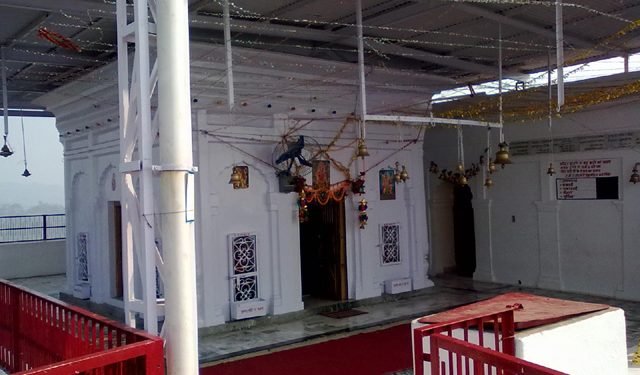Jind town derives its name from Jayanti, the goddess known for victory. This temple was constructed by Pandavas to goddess Jayanti Devi. Goddess Jayanti Devi is known to be highly sensitive and compassionate who lovingly listens to prayers of her beloved devotees.
Shrine’s History
The Pandavas built a temple to Jayanti Devi around which came up the town of Jaintpuri. The name later morphed into Jind. The story of the temple of Mata Jayanti Devi is the story of such a precious gift. The story goes back about 550 years when the Mughals were ruling the country. At that time, a small estate called Hathnaur was situated at the north of present-day Chandigarh. The king of the estate had 22 brothers. One of the brothers was married to the daughter of the king of Kangra in Himachal Pradesh. The girl was a great devotee of Mata Jayanti Devi ? the mother goddess of the clan ? since her childhood. Every morning she first used to worship the goddess and only after that she would perform other activities.
When her marriage was fixed she was very anxious because it meant going far away from her deity and not being able to have darshan of the goddess. She prayed hard and conveyed her grief and remorse to the goddess. Mata Jayanti Devi was moved by the deep devotion of the girl. She appeared in her dreams and promised to accompany her wherever she went. When the marriage party started back from Hathnaur with the brides doli, a miracle happened. Suddenly the doli turned very heavy. Neither the traditional kahars nor the kings men could move it. At this, the bride told her father about her dream. The king, then, bowing to the desire of the divine arranged for another doli, kept the idol in it and sent the goddess with his daughter. The pujari and his family followed the goddess. The king of Hathnaur established a temple for the Devi on a hillock in his estate. First, the girl, and later succeeding generations of the family, worshipped the deity for 200 years.

Architectural Relevance of This Shrine
One can enter into this temple through a gigantic gate located at the foot of the hillock. The temple premise is about 100 steps from this gate. Once we reach the peak of the steps, there is a huge water tank, which is a traditional structure of our Indian temples. The tank was used by people during olden days. The tank is concrete construction and there are steps which lead downwards from both the sides. Whereas the other two sides of the tank comprise the rocky wall of the mound. Few shops are located along the steps trading small items like red net chitnies, fancy jewellery, coconut, devotional songs cassettes, photos of the goddess and also toys etc.Jayanti Devi temple is situated at the peak of this hillock firmly supported by huge pillars.
This site provides a complete sight of the evergreen surroundings, serpentine Jayanti Rao and further settlements. Lying inside the santorum is the stone idol of goddess Jayanti Devi. Lying outside the niches are the idols of Ganesha, Shiva, Laxmi and various other local Gods like Balasudari and Lokda Dev in their folk forms.
Shrine’s Map Location and How to Go There
By Road
Jind is well connected by road. National Highway 71 passes through Jind. There is a wide network of metalled roads that connect the place to other villages and cities like Bhiwani, Ambala, Chandigarh, Faridabad, Hisar, Jagadhari, Karnal etc.There is a single bus service from Chandigarh city to this temple.The Chandigarh administration makes bus facilities at the time of February fair to transport village devotees and also visitors, there is a necessity for regular bus service specifically during holidays and Sundays.
By Rail
Jind has railway station which is well connected to Patiala, Chandigarh and other important towns of Haryana and other states.
By Air
Nearest airport to Jind is Indira Gandhi Intl. Airport, Delhi 125 km.
Events Celebrated at This Shrine
Navratri
Extra Information About this Shrine
The temple attracts visitors during a grand fair held here on full moon day in February and a small fair in August. At that time approximately 1.5 lakh people visit the temple from far and near places.













































